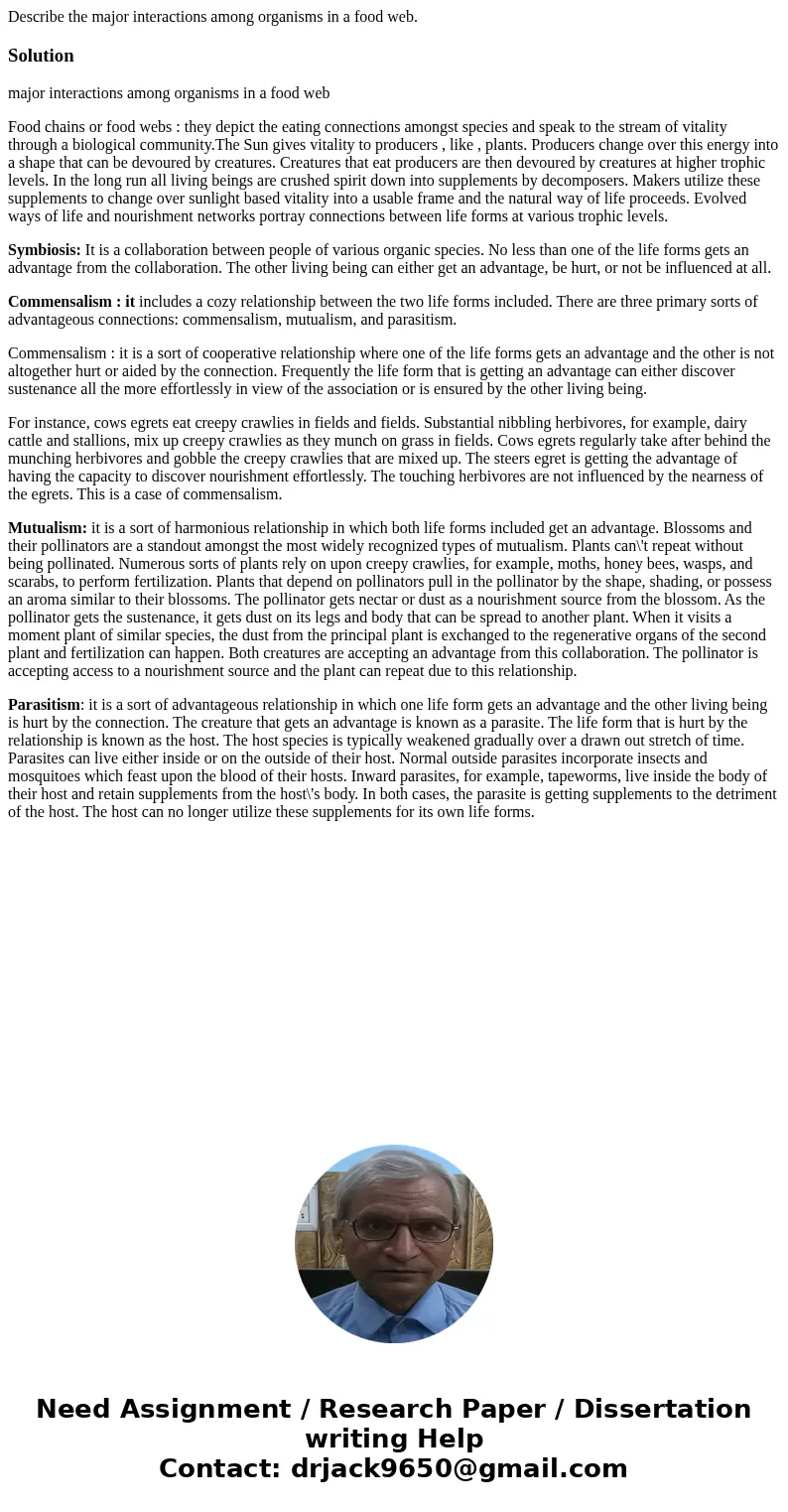Describe the major interactions among organisms in a food we
Describe the major interactions among organisms in a food web.
Solution
major interactions among organisms in a food web
Food chains or food webs : they depict the eating connections amongst species and speak to the stream of vitality through a biological community.The Sun gives vitality to producers , like , plants. Producers change over this energy into a shape that can be devoured by creatures. Creatures that eat producers are then devoured by creatures at higher trophic levels. In the long run all living beings are crushed spirit down into supplements by decomposers. Makers utilize these supplements to change over sunlight based vitality into a usable frame and the natural way of life proceeds. Evolved ways of life and nourishment networks portray connections between life forms at various trophic levels.
Symbiosis: It is a collaboration between people of various organic species. No less than one of the life forms gets an advantage from the collaboration. The other living being can either get an advantage, be hurt, or not be influenced at all.
Commensalism : it includes a cozy relationship between the two life forms included. There are three primary sorts of advantageous connections: commensalism, mutualism, and parasitism.
Commensalism : it is a sort of cooperative relationship where one of the life forms gets an advantage and the other is not altogether hurt or aided by the connection. Frequently the life form that is getting an advantage can either discover sustenance all the more effortlessly in view of the association or is ensured by the other living being.
For instance, cows egrets eat creepy crawlies in fields and fields. Substantial nibbling herbivores, for example, dairy cattle and stallions, mix up creepy crawlies as they munch on grass in fields. Cows egrets regularly take after behind the munching herbivores and gobble the creepy crawlies that are mixed up. The steers egret is getting the advantage of having the capacity to discover nourishment effortlessly. The touching herbivores are not influenced by the nearness of the egrets. This is a case of commensalism.
Mutualism: it is a sort of harmonious relationship in which both life forms included get an advantage. Blossoms and their pollinators are a standout amongst the most widely recognized types of mutualism. Plants can\'t repeat without being pollinated. Numerous sorts of plants rely on upon creepy crawlies, for example, moths, honey bees, wasps, and scarabs, to perform fertilization. Plants that depend on pollinators pull in the pollinator by the shape, shading, or possess an aroma similar to their blossoms. The pollinator gets nectar or dust as a nourishment source from the blossom. As the pollinator gets the sustenance, it gets dust on its legs and body that can be spread to another plant. When it visits a moment plant of similar species, the dust from the principal plant is exchanged to the regenerative organs of the second plant and fertilization can happen. Both creatures are accepting an advantage from this collaboration. The pollinator is accepting access to a nourishment source and the plant can repeat due to this relationship.
Parasitism: it is a sort of advantageous relationship in which one life form gets an advantage and the other living being is hurt by the connection. The creature that gets an advantage is known as a parasite. The life form that is hurt by the relationship is known as the host. The host species is typically weakened gradually over a drawn out stretch of time. Parasites can live either inside or on the outside of their host. Normal outside parasites incorporate insects and mosquitoes which feast upon the blood of their hosts. Inward parasites, for example, tapeworms, live inside the body of their host and retain supplements from the host\'s body. In both cases, the parasite is getting supplements to the detriment of the host. The host can no longer utilize these supplements for its own life forms.

 Homework Sourse
Homework Sourse